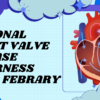Understand Cyanotic Congenital Heart Disease: Causes, Symptoms, & Treatment
Introduction
Cyanotic Congenital Heart Disease (CCHD) is a gathering of complex and possibly dangerous heart conditions that are available upon entering the world. Dissimilar to some other intrinsic heart surrenders that might slip through the cracks for quite a long time or even years, CCHD commonly shows right off the bat in a kid’s life, frequently inside the initial, not many days or weeks after birth. The expression “cyanotic” alludes to the pale blue or purplish staining of the skin and mucous layers that happens when there is a lack of oxygen in the blood. This particular side effect is a sign of CCHD and fills in as a disturbing marker that immediate clinical consideration is required.
Table of contents
Types of Cyanotic Congenital Heart Disease
Cyanotic Congenital Heart Disease (CCHD) envelops a different gathering of heart conditions described by deficient oxygenation of the blood, prompting the pale blue or purplish staining of the skin and mucous layers. These circumstances can change in seriousness and intricacy. Here are a portion of the essential sorts of CCHD:
- Tetralogy of Fallot (TOF): Quadruplicate of Fallot is one of the most widely recognized and notable types of CCHD. It includes four heart deserts: ventricular septal imperfection (VSD), pneumonic stenosis, superseding aorta, and right ventricular hypertrophy. These imperfections lead to a diminished progression of oxygenated blood to the body, bringing about cyanosis.
- Transposition of the Great Arteries (TGA): In TGA, the two fundamental conduits, the aorta and the aspiratory course, are exchanged readily. Subsequently, oxygen-unfortunate blood courses back to the body, while oxygen-rich blood stays in the lungs, prompting cyanosis soon after birth.
- Tricuspid Atresia: This condition includes the shortfall of the tricuspid valve, which isolates the right chamber and right ventricle. Without this valve, oxygen-unfortunate blood can’t stream into the right ventricle and afterward to the lungs for oxygenation. It is shunted straightforwardly to the left half of the heart, causing cyanosis.
- Truncus Arteriosus: Truncus arteriosus happens when the aorta and aspiratory supply route neglect to isolate totally during the fetal turn of events. These outcomes are in a solitary, colossal vein emerging from the heart, which conveys both oxygen-poor and oxygen-rich blood. As an outcome, the body gets insufficiently oxygenated blood.
- Total Anomalous Pulmonary Venous Connection (TAPVC): TAPVC is described by unusual associations between the pneumonic veins and the right chamber, keeping oxygenated blood from getting back to the left half of the heart and, in this way, circling to the body.
- Hypoplastic Left Heart Syndrome (HLHS): In HLHS, the left half of the heart, including the left ventricle, aorta, and mitral valve, is immature. This condition upsets the ordinary progression of oxygenated blood to the body, prompting cyanosis and requiring numerous medical procedures to divert the bloodstream.
- Ebstein’s Anomaly: Ebstein’s inconsistency influences the tricuspid valve, making it strangely situated inside the right ventricle. This upsets the bloodstream, prompting a combination of oxygenated and deoxygenated blood to be siphoned to the body.
- Pulmonary Atresia: In this condition, the aspiratory valve doesn’t grow as expected, hindering the bloodstream to the lungs for oxygenation. Blood might be rerouted through a patent ductus arteriosus (PDA) or a ventricular septal imperfection (VSD) for oxygenation.
- Double Outlet Right Ventricle (DORV): DORV is described by both the aorta and the pneumonic conduit emerging basically from the right ventricle. These outcomes are in blended blood dissemination and cyanosis.
Causes & Hazard Elements of Cyanotic Inborn Coronary illness
Cyanotic intrinsic coronary illness (CCHD) is principally brought about by underlying irregularities in the heart and significant veins that are created during fetal development. While the exact causes are not generally straightforward, there are a few factors that might add to the improvement of CCHD:
- Hereditary Factors: Many instances of CCHD have a hereditary premise. A family background of intrinsic coronary illness can build the gamble of having a youngster with CCHD. Explicit genetic transformations or chromosomal irregularities, like Down disorder (Trisomy 21) or DiGeorge condition (22q11.2 erasure disorder), are known to be related to a raised gamble of CCHD.
- Maternal Factors: Certain maternal variables during pregnancy can impact the gamble of CCHD in the creating baby. These variables include:
- Maternal Smoking: Smoking during pregnancy is related to an expanded gamble of CCHD.
- Maternal Diabetes: Ineffectively controlled diabetes in pregnant ladies can lift the gamble of innate heart abandons, including CCHD, in their posterity.
- Maternal Infections: Certain maternal contaminations, especially rubella (German measles), can build the gamble of inherent heart surrenders.
- Natural Factors: Openness to specific biological variables during pregnancy might add to the advancement of CCHD. These variables include:
- Medications: A few meds taken during pregnancy might be related to an expanded gamble of inherent heart deserts.
- Synthetic Exposures: Openness to specific synthetics or poisons in the climate might assume a part in the improvement of CCHD.
- Fetal Factors: A few fetal elements can impact the gamble of CCHD despite the fact that they are not modifiable. These remember anomalies for the creating heart and significant veins.
- Multifactorial Causes: As a rule, the improvement of CCHD is accepted to be multifactorial, including a blend of hereditary, natural, and fetal elements.

Side Effects of Cyanotic Congenital Heart Disease
Cyanotic innate coronary illness (CCHD) is described by a lack of oxygenation of the blood, bringing about pale blue or purplish staining of the skin and mucous layers, a condition known as cyanosis. The side effects of CCHD can differ depending upon the particular sort and seriousness of the heart imperfection. Typical side effects and indications of CCHD include:
- Cyanosis: The trademark side effect of CCHD is cyanosis, which is a pale blue or purplish color to the skin, lips, nails, and mucous films (like within the mouth and tongue). Cyanosis is most perceptible when the child is crying or dynamic and can be less conspicuous during times of rest.
- Fast or Troublesome Breathing: Newborn children with CCHD might show fast, shallow, or toiled relaxation. They may likewise inhale quicker than typical, particularly during taking care of or crying.
- Weariness and Poor Feeding: Infants with CCHD might tire Effectively while taking care because of the additional work expected to siphon oxygen-unfortunate blood to the body. This can bring about unfortunate weight gain and an inability to flourish.
- Irritability: Babies with CCHD might be particular or bad-tempered, frequently in light of the fact that they are attempting to get sufficient oxygen. They might experience issues dozing and seem fretful.
- Clubbing: Over the long run, a few babies with CCHD might foster clubbing of the fingers and toes. Clubbing is portrayed by the broadening of the fingertips and nails, giving them an adjusted or bulbous appearance.
- Postponed Development and Development: Youngsters with uncorrected CCHD might encounter deferred development and formative achievements because of the constant absence of oxygen in their bodies.
- Heart Murmurs: Medical services suppliers might recognize unusual heart sounds, known as heart mumbles, during routine actual assessments. Mumbles might show the presence of CCHD, albeit not all heart mumbles are related to intrinsic heart deserts.
Treatment of Cyanotic Congenital Heart Disease
The treatment of cyanotic innate coronary illness (CCHD) commonly relies upon the particular sort and seriousness of the heart deformity. Treatment objectives for CCHD center around further developing oxygenation of the blood, easing side effects, and forestalling confusion. Here are a few standard ways to deal with the treatment of CCHD:
- Medications: At times, prescriptions might be endorsed to assist with overseeing side effects and further develop heart capability. Prescriptions can include:
- Prostaglandins: Prostaglandin E1 (PGE1) is a medicine that can keep the ductus arteriosus (a fetal vein that interfaces the pneumonic course to the aorta) open, considering better blending of oxygenated and deoxygenated blood.
- Diuretics: Diuretics can assist with diminishing liquid development in the lungs and body, which can be helpful for letting side effects like brevity free from breath.
- Inotropes: Inotropes can work on the heart’s capacity to siphon blood, assisting with keeping up with satisfactory flow.
- Catheter-Based Procedures: Some CCHD cases can be treated with negligibly obtrusive catheter-based methods instead of open-heart medical procedures. These systems might include methods like inflatable angioplasty to broaden limited veins or use stents to keep veins open.
- Careful Repair: Many instances of CCHD require open-heart medical procedures to address the underlying anomalies in the heart and significant veins. The particular surgery relies upon the sort of CCHD. Careful intercessions may include fixing septal deformities, rerouting the bloodstream, or supplanting inadequate valves.
- Heart Transplant: In serious situations where the heart imperfection isn’t manageable to fix, a heart relocation might be considered if all else fails. This includes supplanting the patient’s weak heart with a solid contributor heart.
- Oxygen Therapy: A few people with CCHD might require supplemental oxygen treatment to keep up with sufficient oxygen levels in the blood. Oxygen treatment can be controlled at home or in a medical care setting.
- Way-of-life Modifications: People with CCHD might profit from way-of-life changes, for example, staying away from demanding active work, keeping a heart-sound eating routine, and getting ordinary check-ups with a cardiologist.
- Long haul Follow-Up: CCHD frequently requires long-lasting clinical administration and follow-up care with a cardiologist. Standard observing is fundamental to evaluating heart capability, distinguishing possible complexities, and changing treatment depending on the situation.
FAQ’s For Cyanotic Congenital Heart Disease
Some common types of CCHD include Tetralogy of Fallot (TOF), Transposition of the Great Arteries (TGA), Tricuspid Atresia, Truncus Arteriosus, Total Anomalous Pulmonary Venous Connection (TAPVC), Hypoplastic Left Heart Syndrome (HLHS), Ebstein’s Anomaly, Pulmonary Atresia, and Double Outlet Right Ventricle (DORV).
CCHD is primarily caused by structural abnormalities in the heart and major blood vessels that develop during fetal growth. Genetic factors, maternal factors (such as smoking and diabetes), environmental factors (including medication and chemical exposures), and fetal factors can all contribute to the development of CCHD.
Infants with CCHD may display symptoms like cyanosis (bluish or purplish skin discoloration), rapid or labored breathing, poor feeding, irritability, clubbing of fingers and toes, delayed growth and development, and heart murmurs.
In many cases, CCHD requires lifelong medical management and follow-up care with a cardiologist. Regular monitoring is essential to assess heart function and identify potential complications.
Yes, CCHD can often be detected before birth through prenatal screening tests such as fetal echocardiography (a specialized ultrasound) or maternal blood tests. Early detection allows for better preparation and planning for the baby’s care after birth.
While some risk factors for CCHD are beyond control, such as genetic factors, pregnant individuals can reduce their risk by avoiding smoking and maintaining good prenatal health. Early detection through prenatal screening can also help with early intervention and management.
Conclusion
All in all, Cyanotic Innate Coronary illness (CCHD) presents an imposing test from birth, influencing people genuinely and inwardly. This blog has revealed insight into the assorted types of CCHD, its causes, and diagnostic cycles. It has illustrated treatment choices and stressed the meaning of ongoing examination and emotionally supportive networks. Those living with CCHD recollect that trust exists in clinical headways. Early recognition and proactive administration are significant for further developed results. By bringing issues to light and upholding CCHD research, we can offer a more promising time to come for those impacted by this condition, guaranteeing they get the consideration and support they merit.
Tags :-
Estimated reading time: 9 minutes




Heart attack symptoms, causes and treatment
[…] heart is an integral part of our lives, and its solid commitment plays an important role. We all know that it is essential to pay attention to heart health, but do you know the side […]
October 11, 2023 at 9:56 am
How to control Nightfall its Causes, Symtoms, & Treatment
[…] Understand Cyanotic Congenital Heart Disease: Causes, Symptoms, & Treatment […]
October 30, 2023 at 5:53 pm
How to Check Heart Blockage A Comprehensive Guide Step By Step
[…] and understanding heart blockage is an urgent part of heart wellbeing. Heart blockage, a condition where the heart’s electrical signs are disturbed, can have serious outcomes whenever left […]
November 8, 2023 at 10:24 am
Know How Difference Between Cardiac Arrest & Heart Attack
[…] Understand Cyanotic Congenital Heart Disease: Causes, Symptoms, & Treatment […]
November 18, 2023 at 9:02 am